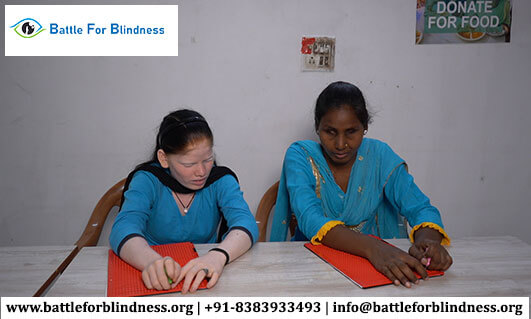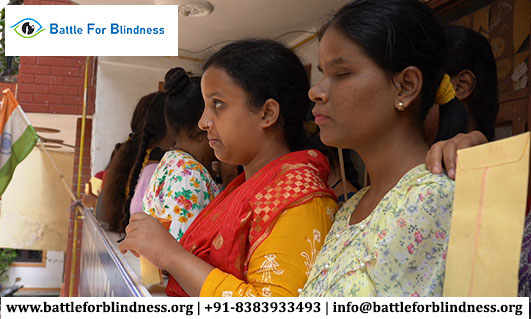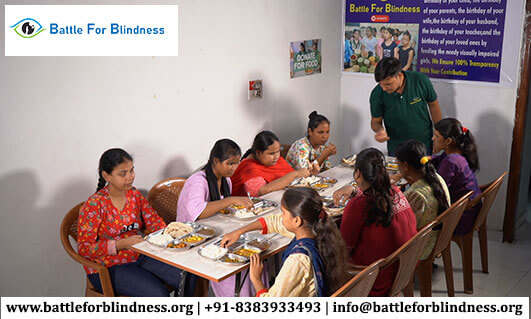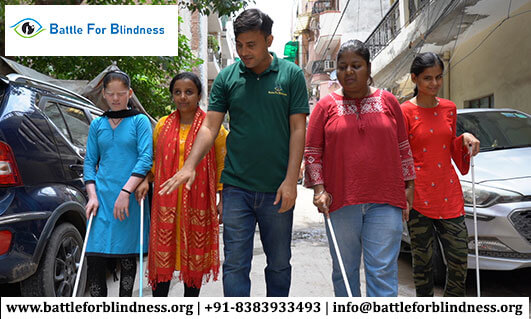
Education is a powerful tool for empowering individuals, and every student, regardless of ability, deserves equal access to learning resources. For visually impaired students, accessible learning tools have become an essential part of ensuring they can fully engage in the educational process. From assistive technology to tactile learning methods, these tools are designed to address specific needs, fostering independence and academic success.
1. Braille: The Foundation of Accessible Learning
Braille remains one of the most important tools for visually impaired students. It’s a tactile writing system that allows individuals to read and write through touch, using raised dots to represent letters, numbers, and punctuation. With the introduction of digital Braille displays and printers, students can now access more content than ever before.
- Braille Books: Physical Braille books are crucial for subjects like math and science, where visual diagrams can be converted into tactile diagrams for hands-on learning.
- Refreshable Braille Displays: These devices connect to computers or smartphones and convert digital text into Braille, allowing students to access a wide range of materials electronically.
2. Screen Readers: Bridging the Digital Divide
Screen readers are software programs that convert on-screen text into speech or Braille. This technology allows visually impaired students to access digital textbooks, websites, and applications, enabling them to participate in online classes or complete assignments independently.
- Popular Screen Readers:
- JAWS (Job Access With Speech): One of the most widely used screen readers, JAWS provides robust features for navigating websites, documents, and applications.
- NVDA (NonVisual Desktop Access): An open-source screen reader, NVDA is free and offers many of the same features as paid software, making it a popular choice for students on a budget.
- VoiceOver: Built into Apple devices, VoiceOver is a powerful screen reader that allows users to navigate their iPhones, iPads, and Macs with ease.
3. Magnification Tools: Enhancing Visual Access
For students with low vision, magnification tools help enlarge text and images, allowing them to read printed or digital materials more comfortably.
- Handheld Magnifiers: These are portable, easy-to-use devices that enlarge text in books or on worksheets.
- Electronic Magnifiers: Also known as video magnifiers, these devices project enlarged images onto a screen, offering more adjustable magnification than handheld tools.
- Screen Magnification Software: Programs like ZoomText or Windows Magnifier allow students to zoom in on parts of the computer screen, making it easier to read text and view images.
4. Audio Books and Text-to-Speech (TTS) Technology
Audio books and TTS technology provide an alternative way for visually impaired students to access written content. This method converts text into spoken words, making it easier to consume large amounts of reading material.
- Audio Books: Services like Audible or Bookshare provide a vast library of audio books, including textbooks and literature, allowing students to listen to their required readings.
- Text-to-Speech Tools: Built into many e-readers and devices, TTS tools read digital text aloud. They’re especially useful for studying long texts or taking notes, as students can listen while focusing on comprehension rather than visual reading.
5. Tactile Graphics: Making Visual Subjects Accessible
Subjects like math, science, and geography often rely on visual representations such as charts, graphs, and maps. Tactile graphics convert these visual elements into raised line drawings that students can explore by touch.
- Tactile Diagram Kits: These kits allow students to create their own tactile diagrams, making subjects like geometry or biology more interactive and understandable.
- Braille Embossers: Advanced Braille embossers can print both text and tactile graphics, offering a complete solution for visually impaired students who need access to complex visual information.
6. Assistive Learning Apps
Many apps are now specifically designed to support the learning needs of visually impaired students, making studying and completing assignments more accessible.
- Seeing AI: This app, developed by Microsoft, narrates the world around the user, describing objects, text, and even people. It’s particularly useful for identifying classroom objects or reading printed materials.
- Be My Eyes: This app connects visually impaired users with sighted volunteers who provide assistance via live video calls. Students can use the app to navigate their surroundings, read text, or get help with assignments.
- KNFB Reader: This app allows users to take pictures of printed text, which it then reads aloud or converts into Braille. It’s an excellent tool for accessing handouts, textbooks, or classroom signs.
7. Online Learning Platforms: Accessibility Features
As online learning becomes more prevalent, many educational platforms are incorporating accessibility features to ensure visually impaired students can fully participate in remote education.
- Moodle and Blackboard: These popular learning management systems are designed with screen reader compatibility in mind, making it easier for visually impaired students to navigate course materials, submit assignments, and participate in discussions.
- Khan Academy: Offering free courses in a wide range of subjects, Khan Academy provides accessible content for visually impaired students, including audio descriptions and TTS compatibility.
- Coursera and edX: These platforms offer courses from leading universities and have improved their accessibility features, such as captioning, alt text for images, and screen reader support.
8. Smart Pens and Note-Taking Devices
Taking notes can be a challenge for visually impaired students, but smart pens and accessible note-taking devices are changing the game.
- Livescribe Smartpens: These pens record lectures while students take notes, syncing the audio with written content. Afterward, students can tap their notes and hear the corresponding section of the lecture.
- BrailleNote Touch: This note-taking device allows students to write in Braille and convert their notes into digital formats. It’s a versatile tool for keeping track of assignments, lectures, and personal notes.
9. The Importance of Teacher Training
While having the right tools is crucial for visually impaired students, it’s equally important for educators to be trained in using these tools and accommodating visually impaired students in the classroom. Training teachers on assistive technology, accessibility strategies, and inclusive teaching methods ensures that visually impaired students can thrive academically.
Conclusion
Accessible learning tools have transformed education for visually impaired students, enabling them to participate fully and succeed in school. From Braille and screen readers to tactile graphics and assistive apps, these tools are breaking down barriers to education, empowering students to pursue their academic goals with confidence. As technology continues to evolve, the future holds even more promise for creating inclusive, accessible learning environments for all students.





